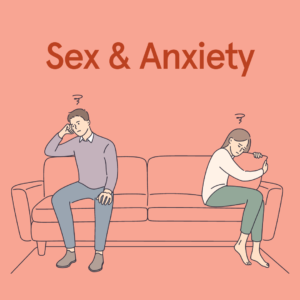Self harm or self-injury is the intentional wounding of one’s own body. Most commonly, a person who self harms will cut themselves with a sharp object.
Self harm can also include:
- burning or branding (using cigarettes, lit matches or lighters, or other hot objects)
- severely scratching
- hair pulling (trichotillomania)
- biting themselves
- excessively picking at their skin (dermatillomania) or wounds
- punching or hitting themselves
- head banging
- carving words or patterns into their skin
- excessive skin-piercing or tattooing, which may also be indicators of self harm
Self Harm Causes
There isn’t a simple answer for what causes people to self-injure. Although this extreme behavior may seem like a suicide attempt on the surface, it’s really an unhealthy coping mechanism. People cut or hurt themselves to release intolerable mental distress or to distract themselves from painful emotions. Often, the self-mutilator may have difficulty expressing or understanding their emotions. People who self harm report feelings of loneliness or isolation, worthlessness and rejection, self-hatred, guilt, and anger. When they attack themselves, they are looking for:- a sense of control over their feelings, their body, or their lives
- a physical diversion from emotional pain or emotional “numbness”
- relief from anxiety and distress
- punishment of supposed faults
Who is At Risk for Self Injury?
Self harm occurs in all walks of life. It is not restricted to a certain age group, nor to a particular race, educational, or socioeconomic background. It does occur more often in:- people with a background of childhood trauma, such as verbal, physical, or sexual abuse
- those without a strong social support network or, conversely, in those who have friends who self harm
- those who have difficulty expressing their emotions
- people who also have eating disorders, post traumatic stress disorder (PTSD), obsessive compulsive disorder (OCD), borderline personality disorder, or those who engage in substance abuse
Self-Harming Symptoms
Physical signs of self harm may include:- unexplained scars, often on wrists, arms, chest, or thighs
- fresh bruises, scratches or cuts
- covering up arms or legs with long pants or long-sleeved shirts, even in very hot weather
- telling others they are clumsy and have frequent “accidents” as a way to explain their injuries
- keeping sharp objects (knives, razors, needles) either on their person or nearby
- blood stains on tissues, towels, or bed sheets
- isolation and withdrawal
- making statements of feeling hopeless, worthless, or helpless
- impulsivity
- emotional unpredictability
- problems with personal relationships
Help for Self Harm
The first step in getting help for self harm is to tell someone that you are injuring yourself. Make sure the person is someone you trust, like a parent, your significant other, or a close friend. If you feel uncomfortable telling someone close to you, seek out a teacher, counselor, religious or spiritual advisor, or a mental health professional. Professional treatment for self injury depends on your specific case and whether or not there are any related mental health concerns. For example, if you are self harming but also have depression, the underlying mood disorder will need to be addressed as well. Most commonly, self harm is treated with a psychotherapy modality, such as:- Cognitive behavioral therapy (CBT), which helps you identify negative beliefs and inaccurate thoughts, so you can challenge them and learn to react more positively.
- Psychodynamic psychotherapy, which helps identify the issues that trigger your self-harming impulses. This therapy will help you develop skills to better manage stress and regulate your emotions.
- Dialectical behavior therapy (DBT), which helps you learn better ways to tolerate distress. You’ll learn coping skills so you can control your urges to self harm.
- Mindfulness-based therapies, which can help you develop skills to effectively cope with the myriad of issues that cause distress on a regular basis.
- Asking for help from someone whom you can call immediately if you feel the need to self injure.
- Following your treatment plan by keeping your therapy appointments.
- Taking any prescribed medicines as directed, for underlying mental health conditions.
- Identifying the feelings or situations that trigger your need to self harm. When you feel an urge, document what happened before it started. What were you doing? Who was with you? What was said? How did you feel? After a while, you’ll see a pattern, which will help you avoid the trigger. This also allows you to make a plan for ways to soothe or distract yourself when it comes up.
- Being kind to yourself – eat healthy foods, learn relaxation techniques, and become more physically active.
- Avoiding websites that idealize self harm.
- Offer support and don’t criticize or judge. Yelling and arguments may increase the risk that they will self harm.
- Praise their efforts as they work toward healthier emotional expression.
- Learn more about self-injuring so you can understand the behavior and be compassionate towards your loved one.
- Know the plan that the person and their therapist made for preventing relapse, then help them follow these coping strategies if they encounter a trigger.
- Find support for yourself by joining a local or online support group for those affected by self-injuring behaviors.
- Let the person know they’re not alone and that you care.
Need More Information?
Are you engaging in self harm or is your loved one self injuring? Don’t wait to seek help – speak to one of our caring, compassionate mental health professionals today. Contact the Center for Treatment of Anxiety and Mood Disorders in Delray Beach, Florida for more information or call us at 561-496-1094.Dr. Andrew Rosen
Dr. Andrew Rosen PHD, ABPP, FAACP is a Board-Certified Psychologist and the Founder and Director of The Center for Treatment of Anxiety and Mood Disorders, as well as, the Founder of The Children’s Center for Psychiatry Psychology and Related Services.





